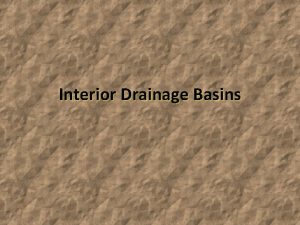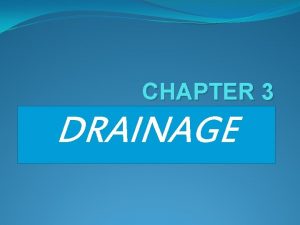Working together to tackle common issues Land drainage







- Slides: 7

Working together to tackle common issues Land drainage Reduces channel capacity through deposition, encourages instream growth and reduced conveyance Local landowners Agricultural productivity NFU CLA Soil is the fundamental resource form agricultural productivity. Good quality of topsoils allows flexible utilisation (crop type, seasonality of operations) Environment Agency Biodiversity Soil loss Smothers bed with layers of silt and sand with effects on invertebrates and potential fish spawning Natural England RSPB Water supply Water quality Influences ability to abstract water at certain times of year when high turbidities lead to network outages Soil particles carry and can store nutrients and other pollutants that can be remobilised during periods of flood or high biological activity Water companies Customers (residents and tourists) Natural Enterprise

Understanding catchment characteristics

When are sediment concentrations greatest?

What areas are most at risk? How can we focus our efforts?

Identifying resources and other similar catchments

When are phosphate concentrations greatest?

Summary • The Eastern Yar suffers from an elevated sediment load. Sediment influences all the river stakeholders in one way or another • Most of the sediment moves during individual large flood events – 90% of the sediment moving in 5% of the time • The main soil types of the Eastern Yar catchment are at risk of water erosion • The highest sediment loads in the Eastern Yar are in winter (January and February) • In contrast, the highest concentrations of phosphate in the river are recorded during the summer months, when the flows are lowest













